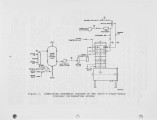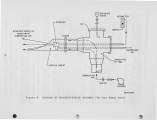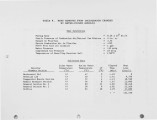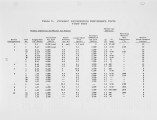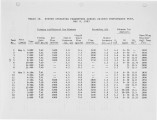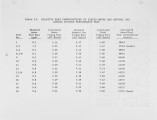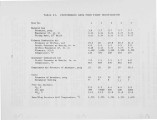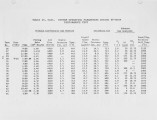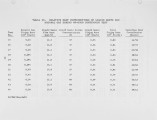| OCR Text |
Show PRELIMINARY PERFORMANCE TESTS Preliminary performance tests were conducted to determine approximate operating characteristics of system components prior to actual firing of the cyclonic incinerator with liquid waste. The tests are described below. Cold Bench Experiments with Atomizers In this preliminary test, atomizer spray patterns were examined and approximate air and liquid pressures were determined. A bench-test station was positioned near the incinerator unit so that existing water and compressed air lines supplying the incinerator could also serve the bench unit during the cold tests. Combustion air was piped to the test station from a separate blower through a valve and an orifice and connected to a 3-inch tee pipe fitting, into which was inserted a typical atomizer assembly described earlier. Figure 4 is a diagram of the test set-up. Both the water and compressed air utilized existing pressure gauges installed for incinerator use. The water flow rate was measured with a rotameter. A typical test procedure consisted of setting the compressed-air pressure to 10 psig, the water pressure and flow rate to 10 psig and 3 gph respectively, and the combustion air to approximately 5000 SCF/h, and then introducing all three fluids into the atomizer/nozzle configuration in sequence. The initial installation position of an atomizer was such that the spray emitted from the atomizer was in the same direction, or parallel to, the combustion air stream flowing over the atomizer. Also, the atomizer was initially placed flush with the curved edge of the nozzle insert (see Figure 4) whose radius of curvature is identical to the inside radius of the incinerator chamber. After the spray was observed, the following parameters were varied: 1. Position of atomizer along the longitudinal axis of the nozzle insert (i.e., the atomizer was moved towards the simulated incinerator chamber or away from it) 2. Water pressure and flow rate 3. Compressed air pressure. This first series of tests for each atomizer was followed by reversing the orientation of the atomizer such that the spray emitted was in the opposite direction, or counter to the combustion air stream flowing over the atomizer. Atomizers tested were as follows: 1. Pneumatic Delavan with 90° hollow-cone spray 2. Pneumatic Spraying Systems with 30° solid-cone spray 13 |







